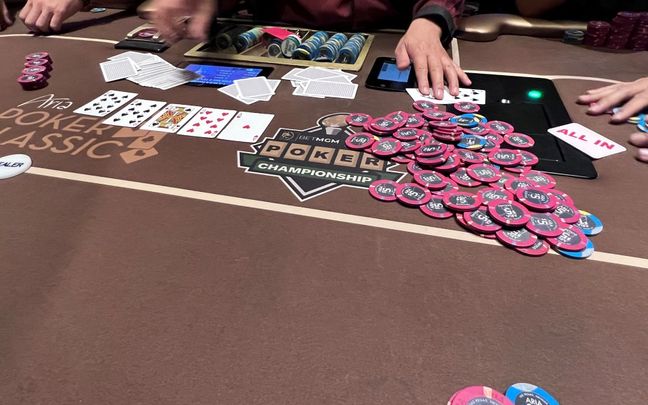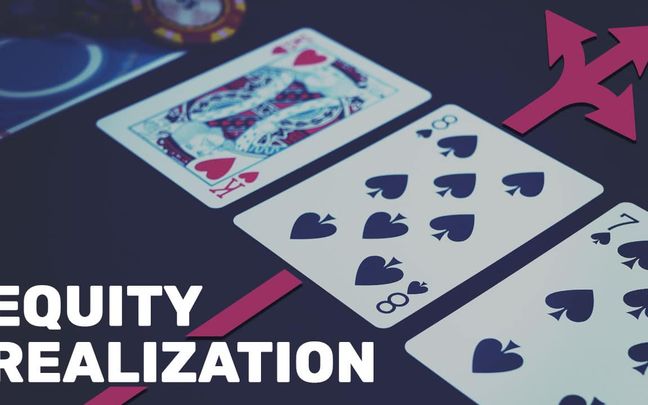Stack size is a crucial factor in poker, significantly influencing both strategy and player decisions. Effectively managing your stack size can help you optimize your chances of winning in various situations. This article will provide a clearer understanding of the role of stack size in different types of poker formats, from cash games to tournaments.

Stack size determines how you play in poker.
What is Stack Size in Poker?
In poker, stack size refers to the total number of chips (or money) that you have at the table at a specific moment. Stack size plays a crucial role in determining each player's strategy and style of play. It influences how you bet, defend, and even how you make decisions in critical situations.
Here are the common types of stack sizes:
Short Stack
This refers to when you have fewer chips than the average at the table. With a short stack, you have fewer options and often need to play more tightly and cautiously. A short stack typically forces you into an "all-in" situation to maximize your chances of winning with your limited chips.
Strategies for short stacks often involve playing more aggressively when holding strong hands to either double your stack or take chips from opponents.
Medium Stack
With a medium stack, you will have more flexibility in your strategy. You can play both defensively and aggressively, depending on the situation and your hand. A medium stack allows you to bluff or play for draws without facing as much risk as with a short stack. However, managing a medium stack effectively remains crucial to avoid falling into short stack territory.
Big Stack
This is when you have a significantly larger number of chips than the other players at the table. Having a big stack provides a substantial advantage, allowing you to dominate betting rounds. You can comfortably place bets, pressure opponents with smaller stacks, and create leverage over the entire table. However, if not used effectively, a player with a big stack can also lose chips quickly due to overconfidence or complacency.

A large stack size offers numerous strategic options.
The Importance of Stack Size in Poker Strategy
The importance of stack size in poker strategy can be analyzed through several key aspects.
Decision-Making Based on Stack Size
Stack size in poker directly affects how you make decisions and adjust your strategy in each hand. With a short stack, you must decide earlier whether to go "all-in" due to the pressure of dwindling chips. In contrast, if you hold a large stack, you will have more options and can wait for better opportunities without worrying about forced betting pressures.
Strategies with a Small Stack
Players with a short stack often face greater challenges and need to play tightly and cautiously. You must carefully select the best hands to maximize your chances of doubling your chips. With a small stack, an "all-in" decision may be your only chance to get back into the game, but it can also be a double-edged sword if not calculated carefully.
The Advantage of a Large Stack
Players with a big stack can adopt a more aggressive and offensive playing style. You are not pressured to go all-in and can control the game better. A large stack allows you to make substantial bets to apply pressure on your opponents, causing those with fewer chips to think twice before facing you. This creates a significant psychological and strategic advantage.
Psychological Pressure from Stack Size
Stack size also affects how other players perceive you. A player with a large stack is often viewed as a threat, putting psychological pressure on opponents when they face them. Conversely, players with a short stack are often seen as easy targets, especially when they are forced to go all-in to survive in the game. This makes them vulnerable to attacks from larger stacks.
In summary, stack size not only influences personal strategy but also has a significant impact on the entire table. Effectively grasping and leveraging stack size is a crucial factor in achieving success in poker.

Stack size affects your ability to bluff in the game.
The Differences in Applying Stack Size Between Tournaments and Cash Games
In poker, managing stack size is a crucial factor that influences playing strategy, especially between cash games and tournaments. While both forms of play share common elements, the application of stack size in each type of game exhibits distinct differences.
Stack Size in Tournaments
In tournaments, stack size and gameplay differ significantly due to the rules and structure of the tournament. You cannot rebuy chips once you have entered the tournament, and your stack will gradually diminish over time as the blinds increase. Here are some characteristics of managing stack size in tournaments:
-
Tighter Nature: In tournaments, players often start with smaller stacks compared to cash games, typically ranging from 30 to 50 big blinds. This compels you to be more cautious in decision-making, especially as pressure increases with higher blinds in the later stages of the tournament.
-
Time Pressure and Increasing Blinds: As the tournament progresses, the blinds typically rise, necessitating adjustments to your strategy to optimize your stack. You often have to engage in riskier situations, as maintaining your stack may not be sufficient to cope with the pressures of escalating blinds.
-
ICM Strategy (Independent Chip Model): In tournaments, you need to consider not only the value of your chips but also their future value. Factors such as your position in the tournament, your opponents' chip counts, and specific situations must be weighed to make the best decisions. This often leads to different choices compared to cash games, where each chip holds equal value.
Stack Size in Cash Games
In cash games, each player starts with a specific stack of real money and can buy additional chips at any time during the game. This creates a playing environment with more stable financial factors. Here are some key points regarding stack size in cash games:
-
Larger and Unlimited Stack Sizes: Players typically start with larger stacks, often 100 big blinds or more, and can add more money as needed. This allows you to make riskier decisions without the concern of being eliminated from the game.
-
Risk Management: Due to the unlimited nature of cash games, you can manage your risk more effectively. You can play with a larger stack to better absorb losses without significantly affecting your financial situation.
-
Position Maintenance: A larger stack helps you maintain a better position at the table. You can control the pot size, apply pressure to your opponents, and select more favorable situations to maximize your profits.
The application of stack size between cash games and tournaments shows clear differences and requires you to adjust your strategy according to each situation. In cash games, you have more control and can take more risks due to your larger stack and the ability to add chips. In contrast, tournaments require you to make tighter and more intelligent decisions, especially as the blinds increase and financial pressure escalates.

Effective stack size management helps minimize the risk of losses.
A deep understanding of how to manage stack size in both formats will help you optimize your chances of winning when playing poker.





























